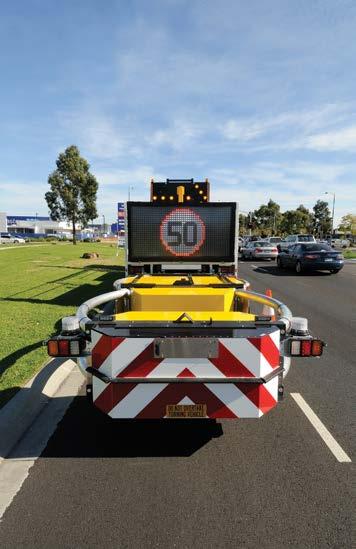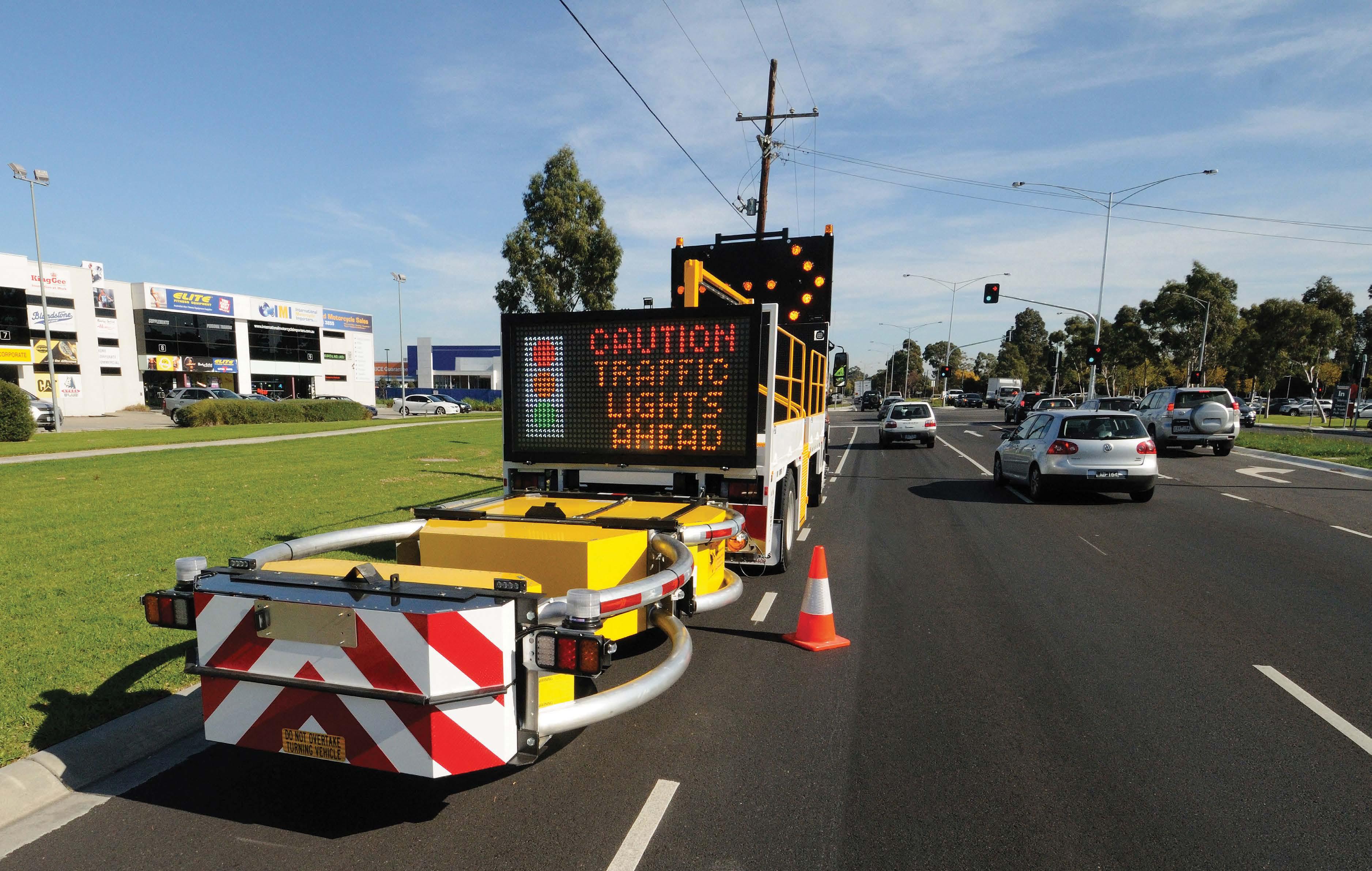AUGUST|SEPTEMBER 2024
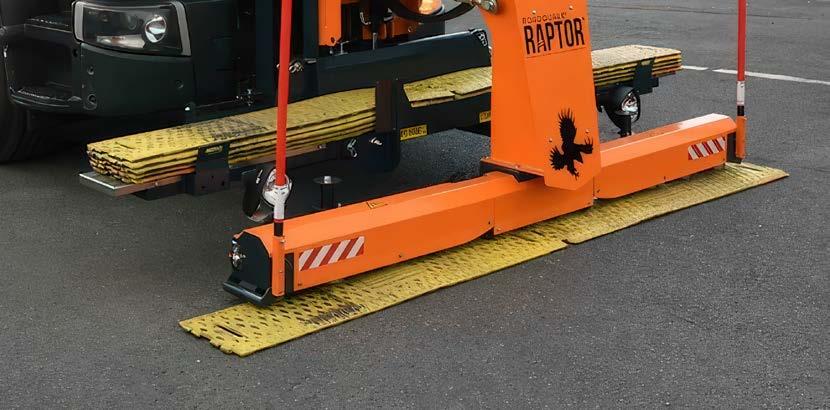
V55.5

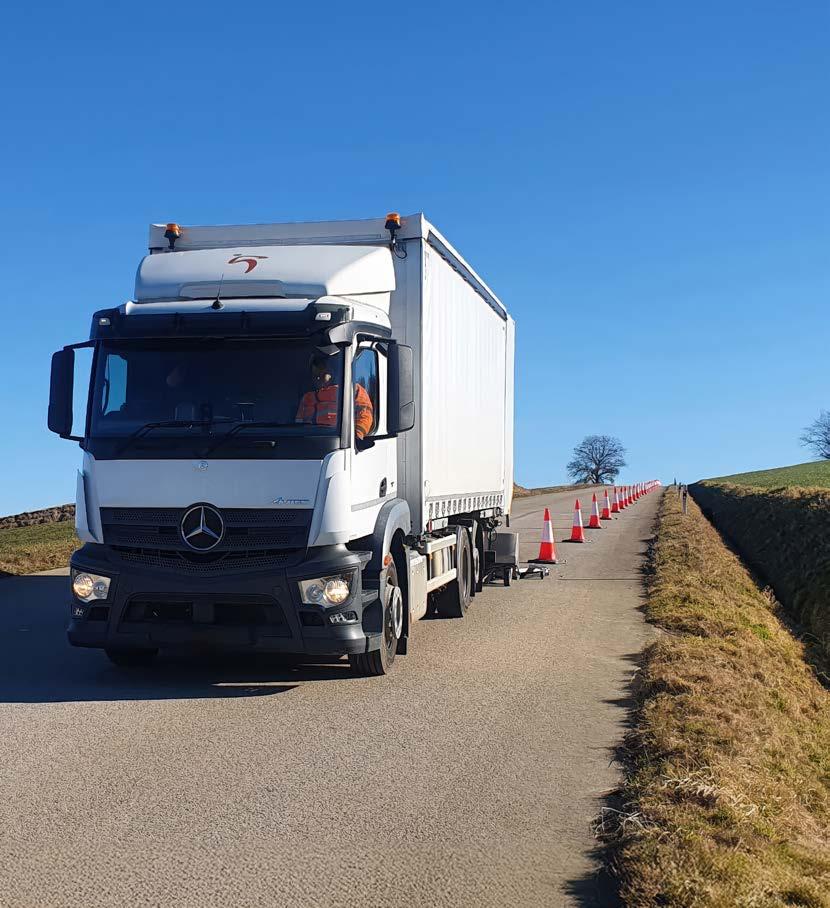
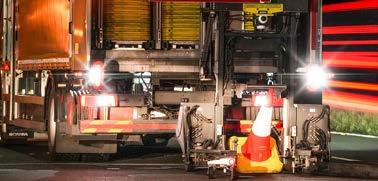


AUGUST|SEPTEMBER 2024

V55.5





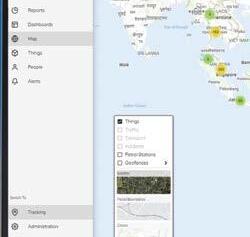
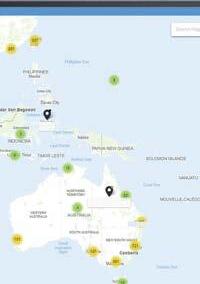







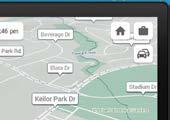



Our integrated vehicle technology suite features advanced telemetry, video, and infotainment systems. It is supported by an automotivegrade cloud platform and cloud connectors that enable predictive analytics, detailed reporting, and effective fault code case management. Connecting manufacturers, dealers, fleets, and drivers seamlessly.
Discover why the world’s leading OEMs and fleets rely on our Australian-designed, turnkey solutions.



directedtechnologies.com.au



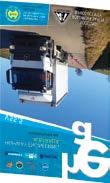



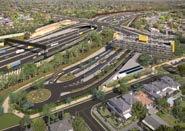
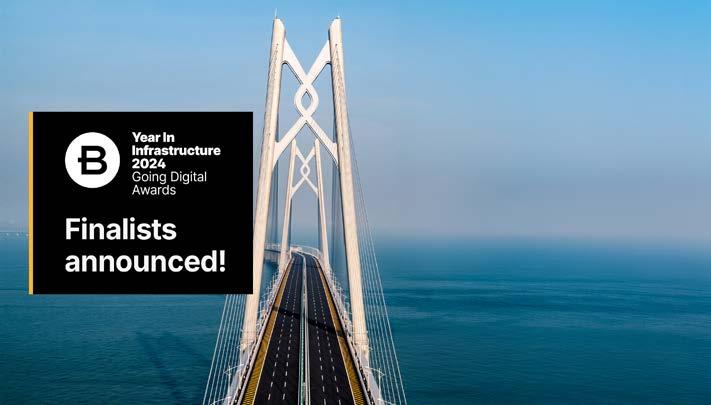
Bentley Systems, Incorporated, the infrastructure engineering software company, recently announced the finalists of the 2024 Going Digital Awards. The annual awards event honours the extraordinary work of Bentley’s global users, showcasing how innovative software enables the advancement of the world’s infrastructure for better quality of life. This year, 36 finalists, across 12 categories, were selected from over 250 nominations submitted by organizations in 36 countries.
Representatives from the finalist organizations will present their projects to a panel of 34 independent judges, to determine the award winners. Winners will be revealed on October 9, during the 2024 Going Digital Awards event, held at the JW Marriott Parq Vancouver.
“Infrastructure is essential. It connects us locally and globally, supporting our society and economic growth and development,” said Kristin Fallon, chief marketing officer, Bentley Systems.
“This year’s Going Digital Awards finalists represent an impressive mix of international projects that are pushing the boundaries of what’s possible on land, at sea, and underground.”
“These programs highlight engineering genius; they showcase the teams of infrastructure professionals that are unlocking the power of data with AI, digital twins, immersive visualizations, and more, to make modern life possible.”
“We applaud and celebrate each finalist for their outstanding achievements to make better, more resilient critical infrastructure for an improved quality of life,” Kristin Fallon added.
The finalists in the 2024 Going Digital Awards include:
• JMT – Digital Experience for I-95 Rappahannock River Crossing Construction Project, Fredericksburg, Virginia, United States
• QK4, Inc. – Going Digital Survey with Bridging Kentucky, Kentucky, United States
• Tecne Systra-Sws Advanced Tunneling Srl – Digital Implementation in Tunnel Assessment and Rehabilitation, Italy
• PT Hutama Karya (Persero) – Navigating the Complexities of Jakarta MRT Phase 2A CP203 with Digital Solutions, Jakarta, South Jakarta, Indonesia
• Webuild s.p.a. – 4D Modeling and Construction Management for a Pedestrian Steel Bridge Erection in the New ENI Headquarter Complex in Milan, Italy, San Donato Milanese, Lombardia to Milano, Italy
• Proicere Ltd. – SPRS Retreatment (SRP) Sellafield, Seascale, Cumbria, United Kingdom
• SPL Powerlines UK – Midland Main Line Electrification, Hertfordshire, Bedfordshire, Northamptonshire, Leicestershire, Nottinghamshire, Derbyshire, and South Yorkshire; United Kingdom
• Transport for London – The Elizabeth Line, London, England, United Kingdom
• INECO – Master Design Stage RBDTD-LV-DS3 North Latvian Section, Latvia
• China Road and Bridge Corporation, China Highway Engineering Consulting Corporation – Phnom Penh – Bavet Expressway, Phnom Penh, Cambodia
• WISDRI Engineering & Research Incorporation Limited – Wuhan Gaoxin 4th Road Comprehensive Reconstruction Project, Wuhan, Hubei, China
• Department of Public Works and Highways (DPWH) – Digital Twin Implementation for NLEX-SLEX Connector Road Project, Caloocan to Manila, Metro Manila, Philippines
More information about Bentley’s 2024 Year in Infrastructure and Going Digital Awards can be found at: https://www.bentley.com/yii/welcome


Sofihub’s wearable health-tech solution to expand Directed Technologies’ telematics and fleet monitoring ecosystem to enhance mobile worker safety - regardless of location.
Australian-owned and operated connected mobility innovator, Directed Technologies, has announced the total acquisition of Sofihub, a leader in assisted monitoring and living technologies, with plans to integrate the Australian company’s technology and team across Directed Group’s fleet and retail customer base.
The acquisition will see Directed Technologies deploy Sofihub’s leading wearable and monitoring products to enable fleet customers to enhance driver safety in and out of the vehicle.
The products will integrate within Directed’s e.things platform providing a single view for fleet managers to track, monitor and receive actionable insights on vehicles, assets and now people.
For the mobile, last-mile delivery or emergency services worker, Sofihub’s wearable monitoring devices including security pendants with alarms and fall alerts devices with two-way communication, will help to improve employee safety, wherever they are during a shift.
The development will also see Directed Electronics, which develops and distributes electronics products to more than 25,000 retail outlets in Australia, expand its extensive smart home portfolio in the smart living and assistive technology space, building on Sofihub’s
thousands of existing users and established presence in the healthcare and aged care sectors.
Speaking on the acquisition, Directed Group’s CEO, Steve Siolis said, “With Australia’s aging population and the growing strain on healthcare resources, there is a significant opportunity for innovation through smart technology and connected services to transform independent living.”
“While Sofihub has thousands of connected active devices both here and abroad, we see significant opportunity to drive strong growth in the business based on our proven brand leadership record and diverse channels to market.”
“Sofihub’s proven track record providing nonintrusive, reliable monitoring systems, aligns with our strategic goals of enhancing quality of living through advanced technological solutions be it for mobile workers, carers, family who require additional live-at-home solutions for our cherished elders, or for those with other care or support needs,” Siolis said.
Sofihub’s capabilities are designed to enhance the safety and independence of elderly and disabled individuals as well as lone workers. Offering a range of intelligent solutions, including the TEQ-FallsAlert for real-time fall detection,
TEQ-Secure safety pendants with 4G GPS tracking and Personal Duress Alarm for Lone Workers and At-Risk Employees. Acquired from ASX listed Careteq Limited, Sofihub’s staff will join the Directed Technologies team with Sofihub’s COO, Alex Boyd, taking the role of General Manager.
Directed Technologies Executive Director, Brent Stafford highlighted how the acquisition will further support existing customers, “We support fleets across APAC and as far afield as South Africa and Mexico and a common theme we see is the workload of fleet managers can be overwhelming.”
“From maintaining vehicle up-time and managing customer deadlines, to navigating increased regulation and tighter operating margins, the load is immense, however duty of care to workers and their safety commendably remains their number one priority.”
“A fleet manager’s duty of care to their workers doesn’t stop when they leave their vehicles, so it’s critical their monitoring solutions don’t either,” Stafford added.
“By acquiring Sofihub, we can provide further real-time monitoring options that can enhance emergency support for vulnerable users in times of need. In addition to boosting safety, we can also provide fleet managers a unified view of their drivers, along with the vehicle telematics and asset monitoring within our existing e.things platform,” he concluded.
The acquisition was communicated with Careteq investors, and the transition period is well underway.
Technology developed at The University of Queensland can remove harmful ‘forever chemicals’ from water so they can be used in renewable batteries.
Researchers at UQ’s Australian Institute for Bioengineering and Nanotechnology have made a filter which quickly and cleanly captures perand polyfluoroalkyl substances (PFAS). The filter contains a patented sorbent solution that uses an ion-exchange technique to isolate and remove the PFAS particles as the water passes through it.
Polymer chemist Dr Cheng Zhang said fluorine-based materials can be harvested from the filter and he’s working on using them to improve clean energy technology.
“People are increasingly aware of the risks that PFAS poses to human health, and how long these chemicals persist in the natural environment,” Dr Zhang said.
“Not only does our filter technology remove harmful particles from water, those captured chemicals are available to be repurposed to help decarbonise the planet.”
“The increasing demand for high-performance rechargeable batteries means manufacturers are constantly searching for new materials that improve the energy density, safety and cycling stability of batteries.”
“Recycled PFAS has excellent properties for this purpose,” Dr Zhang added.
Having successfully tested a prototype of the PFAS filter in a laboratory, Dr Zhang and Professor Jianhua Guo from UQ’s Australian Centre for Water and Environmental Biotechnology will soon commence pilot testing in Brisbane

and the US with $1 million backing from the Advance Queensland Industry Research Projects program.
Testing is being planned for a range of sites including the Luggage Point Sewage Treatment Plant with water management company GHD, project management firm OCTA, and the Queensland Department of Environment, Science and Innovation. In the second year of the project, an additional pilot site will be established to scale up testing.
“These demonstrations will be pivotal to scaling up our filter technology for use in industrial water infrastructure,” Dr Zhang said.
“If this testing goes as we believe it will, we hope to reach commercial production within 3 years.”
PFAS are synthetic chemicals used in consumer and industrial products because of their ability to resist heat, stains, grease and water but they persist in the environment and have been linked to a range of potential human health problems.
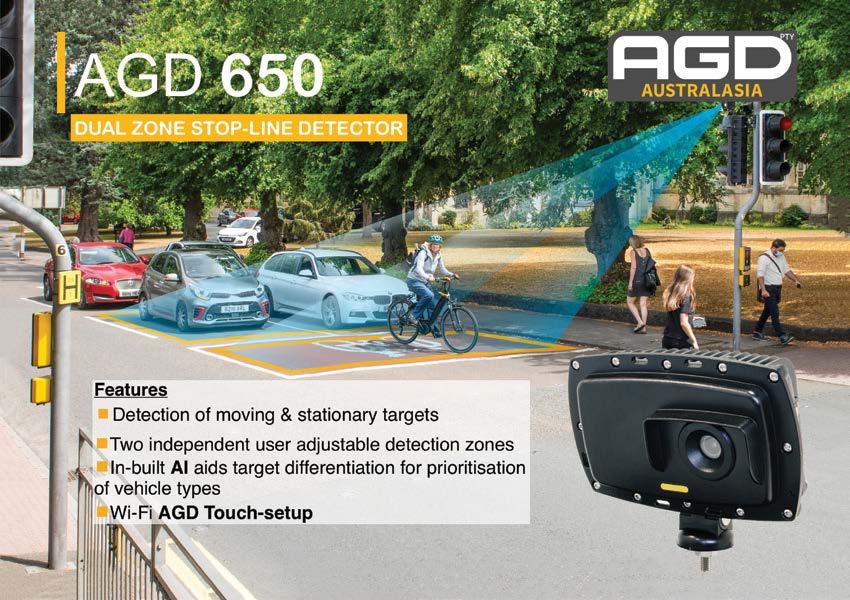

DYNAMIC INFRASTRUCTURE leverages all available asset condition data, reports and images - regardless of the format or age - to build a detailed chronological ‘health record’ for each bridge asset - providing you with immediate access to all your asset data and empowering you with actionable insights that lead to cost savings and improved maintenance e ciency.
With DYNAMIC INFRASTRUCTURE there is no need to change your current bridge inspection methods or service provider. The system utilises all existing data and reports, regardless of the format or age -including paper-based engineering drawings and plans, photos, paper-based inspection and condition reports, together with digitised data and images - to build a detailed ‘health record’ for each bridge asset.
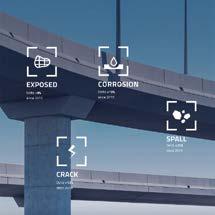

Using DYNAMIC INFRASTRUCTURE’S AI-enabled technology to identify faults and damage e ectively transforms the entire process from a subjective one that relies on an individual to find and identify all faults on a structure and then make a judgement call on severity, to an objective one where over 99% of faults are identified, categorised, logged and then rated for severity against a global database of over 30,000 bridges and counting.
DYNAMIC INFRASTRUCTURE enables you to identify defects before they escalate into major failures, helping you to better manage risk and prevent unexpected expenses. It can even help you maximize warranty coverage through automated repair tracking - providing you with full visibility from the field to the o ce.
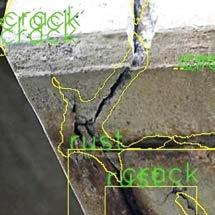
How long would it currently take you to find ALL of the historic inspection, repair and maintenance data for just one of your bridge assets?
A couple of hours? A couple of days? Longer?

With DYNAMIC INFRASTRUCTURE you can access ALL of your bridge asset data – including plans and historic inspection data (manual reports) as well as details of faults, damage, repairs and maintenance –within a matter of seconds.
All of the data, for each of your bridge assets, right at your fingertips… in one comprehensive, chronological digital ‘health record’ …and the massive time saving is only one of the benefits!
DISCOVER MORE

An important change is coming for airports throughout Australia, New Zealand and the Pacific. Aviation authorities will require all airports to have a new Pavement Classification Rating (PCR) to replace the old PCN (Pavement Classification Number) by November 2024.
The National Transport Research Organisation (NTRO) can help airport operators of all sizes with this important change. We have the technical experts and measurement vehicles ready to assist – cost-effective and efficient provision of the answers your airport needs.
NTRO is actively participating in a Civil Aviation Safety Authority (CASA) Working Group established to help bring about this airport classification change within Australia.
“There is not just a mathematical method to convert PCR from PCN and new pavement calculations may have to be done to determine PCR values for existing infrastructure,” NTRO’s National Asset Performance Business Group Leader Nathan Wallace said.
“To assist this change and if required, we have extensive experience in Heavy Falling Weight Deflectometer (HWD) and Traffic Speed Deflectometer (TSD) testing of road and airport infrastructure.
“This type of testing can assist with the determination of existing subgrade strength, and
the calculation of airport runway PCN and PCR values.
“And the combination of data sets can assist airport owners not only in their Aircraft Classification Rating – Pavement Classification Rating (ACR-PCR) system publication, but also drive maintenance planning and condition monitoring of all airport assets.”
Formerly the Australian Road Research Board (ARRB), NTRO has done this type of pavement assessment work for more than 60 years – with a long list of experience in the airport sector.
NTRO has undertaken airport related testing, analysis and reporting on many airports throughout Australia with both its Heavy Falling Weight Deflectometer technology, and its flagship infrastructure measurement vehicle, the iPAVE which incorporates TSD technology. The iPAVE (Intelligent Pavement Assessment Vehicle) allows for collection of a full data set, inclusive of deflection and condition data, in just 30 minutes.
Melbourne and Essendon airports in Victoria, Hamilton Island and Archerfield airports in Queensland, and 16 small to medium airports in Western Australia are among those that have undergone HWD and/or iPAVE testing by NTRO over the past three years.
NTRO prides itself on being innovation driven, with new ideas and concepts to ensure your
Mammoet, the largest global engineered heavy lifting and transport company, recently launched the world’s strongest land-based crane, the SK6000.
As populations grow, so do our energy needs. The SK6000 re-defines the scale of human construction, allowing large energy and infrastructure projects to build from bigger pieces, in parallel – reaching first power sooner, and more cost-effectively.
The SK6000 has a key role in offshore wind, where fast growth of components in recent years has led to supply chain issues. Lifting 3,000t to a height of 220m, the SK6000 ensures that wind farms in the planning phase today can be safely executed and delivered in the future.
In the oil and gas sector, the SK6000 delivers reduced integration times to offshore floating projects, while onshore new build and expansion projects can be delivered with increased uptime. Both scopes then benefit from modular construction techniques that allow critical path components to be simultaneously built offsite anywhere in the world, before transporting to site ahead of installation.
As more new-build nuclear plants are greenlit, the SK6000 helps the sector to benefit from similar tried-and-tested construction methodologies – helping projects to reach completion sooner and deliver low carbon energy to communities.
The SK6000 has a maximum capacity of 6,000t, utilising 4,200t of ballast to lift with a maximum ground bearing pressure of 30t/m2. The crane design uses containerization techniques for ease of deployment, and can be transported using shipping containers to any location worldwide.

airport gets maximum pavement measurement information accurately, with minimum possible downtime.
“Airports connect our communities - and our world – and our team at the NTRO is looking forward to helping the aviation sector efficiently manage this change in pavement rating,” said Jason Sprott, NTRO Executive Director (Ports & Airports).
NTRO encourages airports to discuss the status of their airport pavements and recognises that undertaking thorough strength measurements and assessments is not always required as part of any new PCR assessment. However, NTRO can provide this additional service, if and as required.
To find out more about how NTRO can assist airport managers with PCR requirements, visit https://www.ntro.org.au/airports
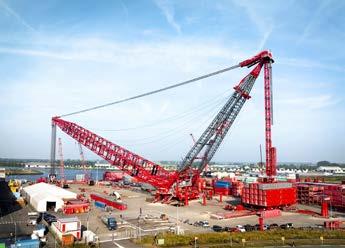
It also offers full electric power capability from battery or supply from the grid, allowing customers to reduce the carbon impact of projects significantly.
“This crane is truly a world record feat of engineering, with a production schedule to match”, said Gavin Kerr, Director Global Services at Mammoet.
“Hundreds of colleagues have been directly involved with its development across the business.”
“There are very few companies on Earth – if any – that could have brought this crane into reality, and we are immensely proud to be able to do so,”
Mr Kerr said.
The SK6000 is currently undergoing testing at Mammoet’s Westdorpe facility in the Netherlands, ready for deployment to its first project later in the year.















UK-Based Fusion Processing Ltd, a leader in autonomous vehicle technology, gave a presentation at the recent CENEX event on why the time is now ripe to discuss the commercialisation of autonomous trucks, buses and material handling vehicles. With significant advancements in technology and regulatory frameworks, the company is poised to bring its cutting-edge solutions to the market, promising a transformative impact on the logistics and transportation sectors.
The convergence of key factors makes this an optimal time to plan the commercialisation of autonomous trucks and buses. The recently enacted UK Automated Vehicle Act 2024 has laid down a legal framework that supports the deployment of autonomous vehicles on public roads. This, combined with Fusion Processing's technological advancements, positions the company to lead the way in revolutionising commercial transportation.
At the CENEX show, Fusion Processing's automated drive system, CAVstar, was featured in a Bradshaw EV T800 Tow Tractor. This vehicle recently completed successful trials at a large industrial site, operating both autonomously and with a remote safety driver. Following these trials, the automated EV T800 Tow Tractor is set to go on sale in 2025.
Automated trucks and buses offer significant advantages that align well with the specific needs of logistics and public transport operators. One of the key benefits is their ability to drive repeat routes with consistency and efficiency. This ensures reliable service delivery, which is crucial for maintaining operational flow and meeting customer expectations.
Another major advantage is that the Automated Drive technology is specifically designed for professional operators rather than consumers. This focus makes it ideal for commercial applications, where safety and reliability are of critical importance. By catering to the needs of experienced operators, automated vehicles can deliver a higher level of performance in complex onhighway and in-yard environments.
Adherence to timetables is another critical feature of automated vehicles. Their ability to strictly follow schedules enhances operational efficiency and reliability, which is particularly beneficial for logistics and public transport services. This precision helps in maintaining smooth operations and reducing delays.
In addition, the gentle driving style of autonomous vehicles leads to reduced tire and brake wear, as well as lower emissions. These factors not only contribute to significant cost savings but also support environmental sustainability by minimising the ecological impact of the vehicles.
Fusion Processing uniquely brings a wealth of real-world experience to the sector. For example, over 85,000 kilometres (52,800 miles) of real-world on-highway service in all weather conditions and mixed traffic environments using large 12-meter buses. The company has already worked in close partnership with the UK’s two largest bus operators and has demonstrated the robustness and reliability of its automated drive system, CAVstar. This extensive experience also provides a valuable read-across for the deployment of automated trucks, as the challenges faced in bus operations closely mirror those in logistics.
“We are fast approaching a pivotal moment in the evolution of transportation,” said Jim Hutchinson, CEO of Fusion Processing. “The combination of our technology progress and the supportive legal environment mean that it’s time for operators of commercial vehicle fleets to plan for the availability of these vehicles over the next three to four years - - much sooner than previously expected. Fusion Processing is ready to lead this transformation, bringing safer, more efficient, and environmentally friendly solutions to the transportation industry.”
Fusion Processing invites logistics operators, public transport providers, and other stakeholders to explore the immense potential of autonomous trucks, buses and material handling vehicles. The company is committed to working closely with industry partners to ensure a smooth transition to this new era of transportation.
Fusion Processing was founded in 2012 to design and build advanced systems for the automation of vehicles, and technology to improve vehicle safety. World leaders in automated driving systems, situational awareness and control systems technology, Fusion Processing’s products have clocked up over 2 million kilometres of service.
Innovations include CAVstar® a full level 4 capable automated drive system, and CycleEyeCMS, a mirror replacement system for buses and trucks, designed and developed in house at their Bristol, UK headquarters. With numerous vehicles taking part in technology trials and commercial operations today, Fusion is driving road safety and enabling a new generation of autonomous vehicle systems that are set to transform the automotive industry.
Visit: www.fusionproc.com
An Alliance comprising constructors McConnell Dowell and CPB Contractors, and designers Arup, Mott MacDonald and Aurecon has been appointed to deliver the Tram Grade Separation Projects (TGSP) in South Australia together with the Department for Infrastructure and Transport.
The projects announced by the Australian and South Australian governments include:
• removing three level crossings where the Glenelg tram line crosses Marion Road and Cross Road, Plympton and Morphett Road, Morphettville
• rebuilding the existing tram overpass at South Road, Glandore
• and intersection upgrades.
Virginia James, South Australia Leader, Arup said the contract win highlighted how the firm’s global experience and local expertise led to a growing track record of delivering significant transport infrastructure in the state.
“We’re immensely proud to be part of the Alliance delivering the TGSP, which is a critical component of unlocking key corridors in South Australia. Our successful delivery of major transport projects highlights our vision for integrated and efficient transport infrastructure, such as the Ovingham Level Crossing Removal Project and Oaklands Crossing Grade Separation Project.”
Approximately 50,000 vehicles pass through the Marion Road and Cross Road level crossings each day. During the morning and afternoon peak around 30 trams also pass through, resulting in the boom gates being down for up to 20 minutes each hour. Motorists currently experience congestion and variable travel times, particularly during these busy peak periods.
Approximately 25,600 vehicles pass through the Morphett Road level crossing each day.
Removing these level crossings will:
• reduce travel times for motorists, buses, freight and airport traffic
• improve safety for local residents, motorists, pedestrians, cyclists and tram drivers
• provide new, safer and more accessible tram stops with improved pedestrian access
• improve connection and sense of community between the suburbs either side of the tram line
• create new community open space for locals to enjoy
As part of the project, the intersections at Marion Road and Cross Road and Marion Road and Anzac Highway will be upgraded to further relieve congestion and improve safety.
Site investigations to inform planning are underway. Major construction will start in late 2024 and the level crossings will be removed by the end of 2025.


4" TRASH PUMP ... DIRTY WATER SPECIALIST
ü Self priming to 7.6m ü Fast, easy set up ü Flows to 1,600 lpm ü 10HP Yanmar diesel ü Mine Boss model shown

Mobile Media Blasting - Soda & Garnet
• Specialising in Concrete preparation for Carbon Fibre application
• Abrasive & Non-Abrasive Blasting
• Paint, rust & contaminant removal from many substrates
• Line marking removal
• Graffiti removal & protection
• Removal of sealers & coatings
• Creation of non-slip surfaces
• Compact machinery for easy access
• Low media usage which means less environmental issues with reduced containments and dust
• Suitable for confined space blasting

A1 Roadlines has been at the forefront of roadwork safety and traffic control equipment since the mid-1970s, providing contractors, councils and road authorities across Australia with an array of high quality, innovative products that maximise safety, productivity and performance along roadwork zones. From traffic control lights and signage, through to specialist site vehicles and, of course, the world-renowned range of Scorpion® MASH TL2 and TL3-certified Truck Mounted Attenuators, A1 Roadlines has built its reputation on delivering quality products which maximise worker safety while also boosting productivity. Now, A1 Roadlines looks set to further enhance its reputation for leadership in the field of work zone safety and protection for road workers, thanks to the recent addition of two new cutting-edge machines to its product offering.

The first of the two new machines - the FALCON ACLM Automated Cone Laying Machine – helps to eliminate manual handling of cones on high traffic roads, while the second new unit – the RoadQuake® Raptor® - allows for the automated deployment, and retrieval of specially designed rumble strips along roadways, thereby providing an effective tactile warning for motorists approaching roadworks or on-road incidents.
Speaking about the machines, Janine Bartholomew, Manager with the exclusive Australian distributors A1 Roadlines, commented: “We’re extremely proud to be able to offer the FALCON ACLM and RoadQuake Raptor as part of our roadwork safety equipment range.”
“From the outset, our focus has always been on delivering practical solutions which maximise safety for both roadworkers and motorists in the vicinity of roadwork zones,” Janine said. “Equipment and solutions which provide the safest possible working environment, while at the same time, helping to maximise productivity.”
“Roadwork zones are inherently dangerous places – especially in areas where workers are exposed to nearby passing traffic,” Janine said. “And unfortunately, some of the highest risk activities on roadwork zones are associated with setting up and taking down the traffic control measures.”
“Tasks such as deploying and collecting traffic cones; or placing and removing warning devices such as rumble strips, often involve workers being in extremely close vicinity to moving traffic. One slight lapse in concentration on behalf of a driver or worker, or any other type of minor mishap can have serious tragic consequences – even at low speed.”
“To that end, we’ve always believed that best way to help alleviate those risks is to remove the ‘manual handling’ aspect of the process,” Janine said. “Removing the need for someone to manually place cones or rumble strips on the roadway, effectively removes the need for workers to be moving around unprotected in
close vicinity to passing vehicles.”
“Needless to say, both of these incredible machines achieve that goal, while at the same time helping to streamline and speed both the placement and collection processes,” Janine added.

Developed and manufactured in Switzerland by Senn Engineering the Falcon ACLM provides a premium solution for fully automated traffic cone handling.
Currently available in two models with a choice of 3 different cone capacities - Falcon 75 ACLM for 75cm cones and the Falcon 100 ACLM for 100cm tall cones - the Falcon ACLM enables cones to be deployed and collected without the need for any operators at the rear of the vehicle.
Endorsed by National Highways UK following rigorous factory, off-road and on-road testing, the Falcon ACLM can place cones at a rate of 7.5 cones per minute and collect them at a rate of 6.5 cones per minute, enabling efficient and consistent cone laying operations without the need for any workers to be exposed the risks of nearby live lanes of traffic. The design of the machine also minimises exposure of the machine structure to live traffic, with zero exposure of moving parts to live traffic lanes. The machines are suitable for use day or night, in all weather conditions except snow.
Currently in production at A1 Roadlines are the following Falcon ALCM models:
• FALCON ACLM 100L – which has a cone capacity of 432 x 100cm cones and is installed on Euro 6 compliant 16-tonne GVM cab chassis with a 8.2m x 2.5m tray.
• CONE DATA:
• Height: 1000 mm
• Cone Base: 550x550 mm
• Weight: Approx. 7.5 kg
• FALCON ACLM 75S – which has a cone capacity of 225 x 75cm cones and is installed on Euro 5 compliant 8.55-tonne GVM cab chassis with a 6.2m x 2.5m tray;
• CONE DATA:
• Height: 750 mm
• Cone Base: 400x400 mm
• Weight: Approx. 5.2 kg
All Falcon ACLM models are designed for one-person operation, with all functions controlled via an easy-to-use touch screen control panel in the driver’s cabin.
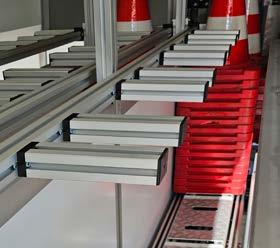

First introduced in 2014 and used extensively in roadwork sites across Europe and the UK, the Falcon ACLM delivers reliable proven performance, with well in excess of 300,000 cones deployed and collected over many thousands of kilometres of lane closures.
Renowned for both its speed, ease of use and reliability in the field, the Falcon ACLM has set a new benchmark for performance, reliability and safety. The Falcon ACLM allows the operator to easily set the distance between cones within a range of 3-100m, while the automatic taper function can be set from right-to-left or left-to-right with the number of cones and spacing between cones programmable to suit local requirements. The back mounted deployment mechanism also allows operation in narrow lanes and on hard shoulders.
The entire process in monitored by 4 cameras, with the vision fed to the main operator console in the driver’s cabin. The system also allows remote access functionality through the GSM network for training, check-ups, video & data logging and trouble shooting.
Endorsed by UK National Highways / NSCRG for use on UK roads, the Falcon ACLM was awarded the HIGHWAYS Award: Product of the Year 2021 as well as the National Highways Industry Award for 'Exceptional contribution to safety research and innovation' 2023.

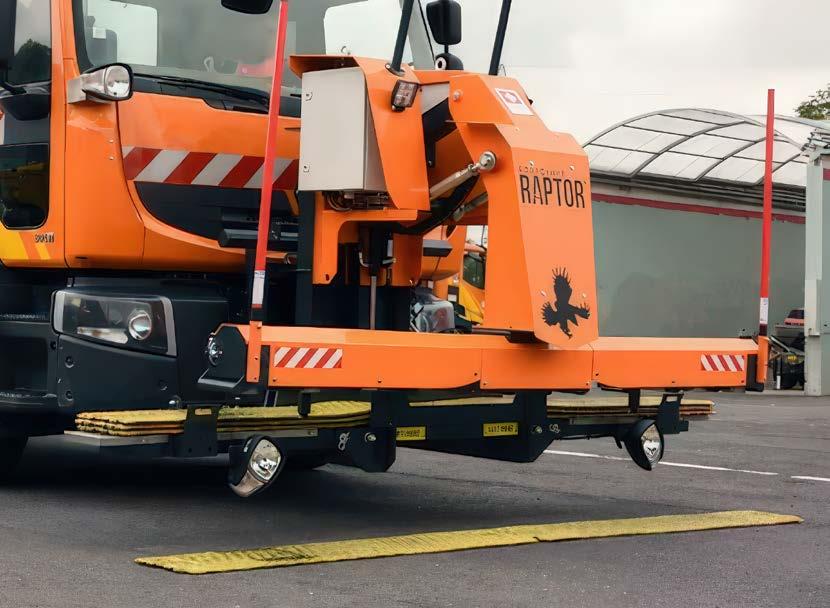
Designed to provide a tactile alert for drivers to notify them of changing road conditions, RoadQuake® Temporary Portable Rumble Strips (TPRS) have been used on projects in the USA, UK and Europe for many years. The flexible, heavy duty strips, which conform to the surface of the road, have also recently been successfully used along a major project in NSW.
The RoadQuake® Raptor® is a truck mounted machine that allows the 3.3-metre RoadQuake® temporary rumble strips to be placed, aligned and collected without the need for any personnel to be out of the vehicle, exposed to passing traffic.
The RoadQuake® Raptor® is suitable for use in all weather conditions. It can lay a 3-strip array in less than 90-seconds, making it ideal for most shortduration, moving, and mobile work zones.
Weighing in at approx. 770kg (without rumble strips loaded), the unit is mounted to the front of the truck, leaving the rear of the truck available for other uses or safety equipment such as a Truck Mounted Attenuator (TMA).
The RoadQuake® Raptor® has storage capacity
for up to 12 RoadQuake® rumble strips. Once the 3.3-metre wide strips have been loaded into the unit by its magnetic grab system, it is placed into ‘Transport Mode’ in which the side wings of the unit (and the flexible strips) fold up to reduce the overall width.
At the work zone, the driver uses the Raptor’s wireless remote control from the safety of the cab to lower the wings of the machine, placing it into “Work Mode” where the Raptor’s magnetic bar retrieves a rumble strip. The unit’s hydraulic arm then lifts and aligns the strip on the lane, releasing it in place. The driver then moves the truck forward, repeating the process as required – with no manual lifting or exposure to live traffic lanes. In the event that one of the rumble strips becomes skewed or misaligned, the RoadQuake® Raptor® can be used to automatically realign it.
When the project/works are complete, the RoadQuake® Raptor® retrieves each rumble strip and returns it to the tray. When all strips have been collected, the machine is returned to “Transport Mode” ready for the next job.

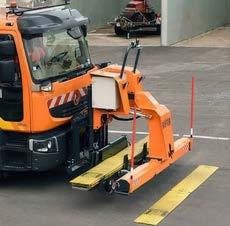
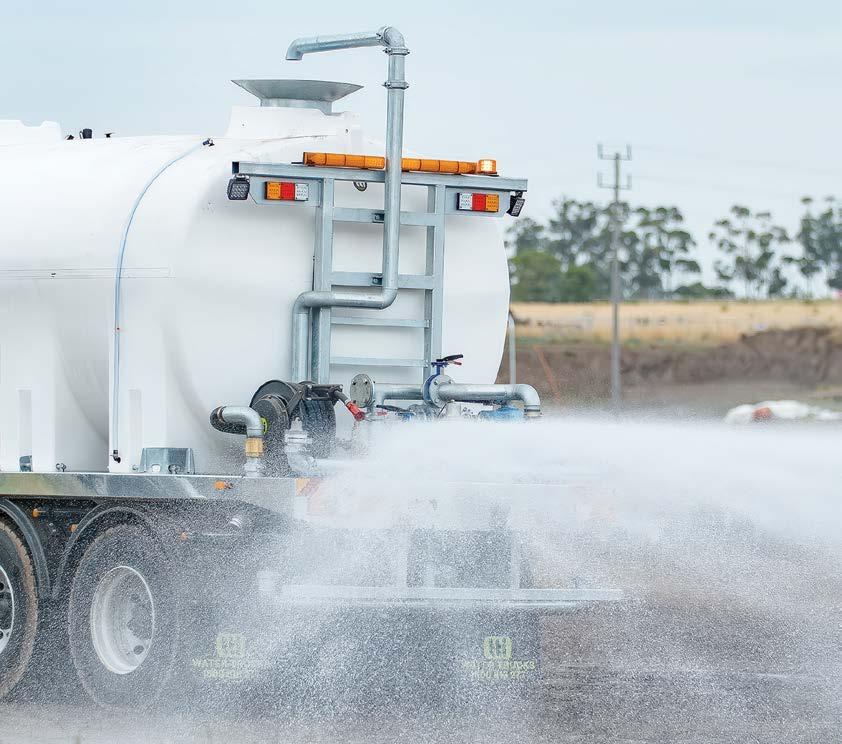
At roadworks and constructions sites across the country, water carts work continuously to suppress dust. These unsung heroes rely on efficient, highquality pumps for both fast loading and spraying water.
One Australian company, Australian Pump Industries, understands the vital role these tankers play.
When a pump under-performs or worse still completely fails, it leads to delays and cost implications.
A specialist in engine and hydraulic drive self-priming tanker pumps, the company has developed designs which are both innovative and have real benefits in terms of reducing maintenance costs!
A classic example is their range of cast iron, semi trash tanker pumps that include both high flow and high head options. These feature huge, non-clog style impellers that will easily handle solids of up to 39mm. This means that when filling the tanker from a creek or dam, small stones or debris will pass through the pump without clogging.
The robust pumps feature high sg cast iron impellers and silicon carbide seals for durability. For abrasive water applications the pumps can even be supplied with cast 316 stainless steel impellers.
Even big trash pumps can clog. That is why Aussie incorporates a front opening port located below the suction inlet flange. That easily accessible clean-out port enables the operator to promptly clear the inside of the pump bowl in the event of a clog. No need to dismantle the pipework or uninstall the pump.
“We design our self-priming pumps to be robust and simple to maintain,” said Aussie Pumps’ John Hales.
“We recommend regular visual checks to make sure that the pumps are running well. Should an issue occur, these ‘no fuss’ pumps are simple to service too.”
Aussie Pumps recommends weekly visual inspections on the pumps, however if operating continuously, then the checks should be more frequent.
For engine drive pumps, the engine will require regular oil changes and replacement air and fuel filters. Both Honda and Yanmar have extensive national service networks to assist with service and engine parts.
For Yanmar diesel drive pumps, Aussie offers a complete engine service kit, with genuine Yanmar parts, for technicians to carry out the engine service.
In addition, Aussie Pumps recommends checking for leaks at the back of the pump where the mech seal is located. If the pump has been left to run dry the mechanical seal will overheat and the elastomers will burn out. Water leaking here may eventually seep into the engine causing further damage.
While the pump is running, carry out a traditional vibration check. Put your hand on the pump to feel for any excessive movements and to listen for any unusual noises coming from the unit. Excessive vibration on engine drive pumps can be an indication that the engine mounts need replacing.
Fuel spilt during refuelling can result in premature deterioration of these rubber mounts. Failure to replace expired mounts can lead to serious engine and pump damage.
Routine checks like these can prevent major catastrophic failures before pumps are allowed to “run themselves to death”.
Aussie Pumps has simplified pump maintenance with the introduction of Rejuvenation Kits for their self-priming pumps. The kits include all the elastomers and seals needed to service the pumps, making maintenance straightforward and easy.
They recommend that kits are held on hand to minimise downtime in the event of failure. Simply quote the model number of your pump and your Aussie Pump Distributor can supply the right Rejuvenation Kit for a value packed price.
For more information contact Australian Pump Industries or Authorised Distributors throughout Australia, or visit the website: www.aussiepumps.com.au
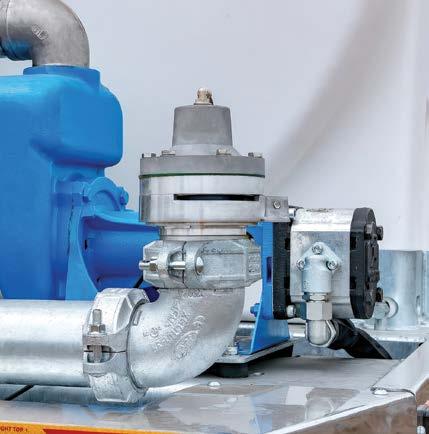




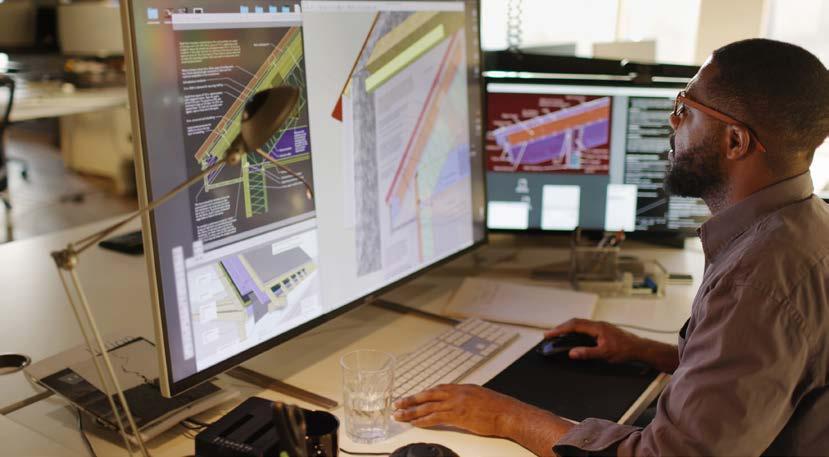
The transition towards net-zero emissions is revolutionising the engineering profession, demanding new skills and roles focused on sustainability and innovation.
“These new roles extend beyond technical tasks to include policymaking, system design, project management, education and outreach, all focused on promoting sustainability and achieving environmental targets,” says Engineers Australia CEO Romilly Madew.
Engineers must adapt to these changes by expanding their knowledge, embracing continuous learning, and taking on leadership positions.
“There is a growing demand for professionals who can design, implement, and manage technologies and systems to meet emissions goals. The circular economy further expands this scope to include skills in lifecycle assessment, resource recovery, and waste reduction,” says Ms Madew.
Here are five key professional development strategies to help engineers get ahead in the net-zero era.
1. Balance technical and non-technical expertise
“For engineers, effective communication and the ability to drive change are as crucial as technical expertise,” says Ms Madew.
Engineers must be able to articulate complex technical concepts to non-technical stakeholders, advocate for sustainable practices within their organisations, and influence policy decisions. This requires strong interpersonal skills, the ability to work collaboratively across disciplines, and a strategic mindset.
2. Commit to upskilling and continuous learning
Upskilling is crucial for staying relevant in a rapidly evolving field. Engineers Australia offers numerous resources, including online tools, CPD programs,
and training opportunities, to help engineers keep their knowledge and skills up to date.
Continuous learning is vital to stay ahead of technological advancements and regulatory changes. Engineers should take advantage of online courses, certifications, and professional development programs to broaden their expertise in areas such as renewable energy, sustainable engineering practices, and environmental management.
3. Engage in industry-specific education and networking
Staying current with the latest technologies and methodologies is essential. Workshops, conferences, and industry events provide opportunities to learn from experts and network with peers.
“Events like Engineers Australia’s Climate Smart Engineering conference offer opportunities to learn from and network with pioneers in sustainable practices, fostering relationships that can further build knowledge and career development,” says Ms Madew.
These events also offer valuable insights into emerging trends, best practices, and innovative solutions. Engaging in these activities helps engineers stay informed about industry developments and connect with like-minded professionals who share a commitment to sustainability.
4. Leverage online courses and microcredentials
Online platforms such as Engineers Australia’s Engineering Education Australia offer tailored courses in energy transition and the circular economy. These courses can enhance competencies in renewable energy technology, sustainable engineering practices, resource optimisation, and lifecycle energy management.
Micro-credentials and online certifications provide flexible, accessible ways to gain specialised knowledge and skills. Engineers should explore these options to build expertise in specific areas and demonstrate their commitment to professional development.
5. Foster global collaboration and knowledge sharing
Engaging with the global engineering community to share knowledge and innovations is crucial. International cooperation accelerates the adoption of best practices and cutting-edge technologies, essential for addressing environmental challenges and building a sustainable future.
“Today's engineers must also be prepared to take on leadership roles, guiding teams to integrate sustainable practices into all aspects of engineering work,” says Ms Madew. “This involves not only managing projects but also mentoring the next generation of engineers."
Global collaboration allows engineers to learn from diverse perspectives, adapt successful strategies from different regions, and contribute to global sustainability goals. Engineers should participate in international forums and engage in cross-border projects to expand their horizons and impact. To get started, Engineers Australia offers access to a network of 120,000 members, providing a valuable platform for connection and growth.
Take the next step in your professional journey by becoming a member of Engineers Australia. Gain access to valuable resources, networking opportunities, and continuous learning programs designed to help you thrive in the evolving engineering landscape.
Join Engineers Australia by 30 September and save $100 on membership. Visit engaus.org/ getsaving for more information.
INSTANT VARIFICATION of conformance to AS/NZ Standards.
ü Product Validity & Provenance
ü Bar & Tag Markings
ü Supports Sustainable Steel Use
ACRS Cloud is the first digital certification system of its kind for steel in the Australian and New Zealand construction industries, providing a secure environment for industry to verify product conformance to Australian and New Zealand Standards. It moves ACRS full certification and traceability from source to site to a digital system.
SCAN the QR CODE to DOWNLOAD the app or VISIT: steelcertification.com/cloud



ACRS - Independent, Expert Third Party Certification and Verification of Reinforcing, Prestressing and Structural Steels for Compliance with Australian and New Zealand Standards




With its innovative design and patented ‘post/fuse’ system, DOLRE ‘Regular’ barrier delivers MASH TL4-rated protection while limiting the maximum transverse force transmitted to the bridge deck to less than 44 kN/post (22 kN/metre), which equates to only 14% of the ultimate outward transverse design load as per AS 5100.2:2017.
What’s more, at around 80 kg/m installed, DOLRE bridge tra c barriers are significantly lighter than many AS 5100 ‘Regular’ / MASH TL4-rated barrier alternatives.
DOLRE transitions have been designed and tested to provide full longitudinal load transfer between the bridge tra c barrier and connecting roadside barriers.
The DOLRE ‘Regular’ barrier, together with the DOLRE transitions and Thrie-Beam barriers create an engineered continuum of MASH TL4 protection – delivering maximum safety for road users onto and across the bridge structure.

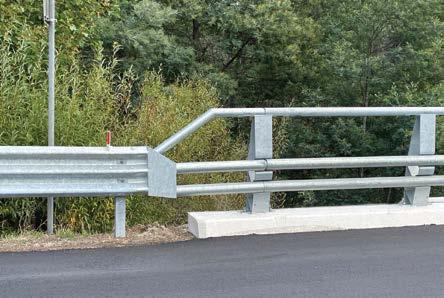
DOLRE’s clean, uncluttered lines and aesthetically pleasing design make it an ideal match for a wide variety of bridge designs and locations. The design allows for rapid installation, as well as rapid repair and reinstatement of the barrier following an impact. DOLRE is also easy to dismantle and remove in times of flood, thereby helping to significantly reduce the risk of damage to valuable bridge assets caused by flood-borne debris.
DOLRE is also available with an extensive range of standard or custom fascia designs and integrated lighting options.
Available in a range of AS 5100:2017 performance levels, including DOLRE Low (MASH TL2 | EN1317 N2), DOLRE Regular (MASH TL4 | EN1317 H2) and DOLRE Medium (MASH TL5+ | EN1317 H4b), there is a DOLRE barrier to suit virtually any bridge, culvert or road embankment application.
All DOLRE systems feature three rails - two rails for the initial vehicle impact and one rail to resist rollover – and one post design per system type, suitable for both sides of the bridge.








Ideal for bridge refurbishment and safety upgrade projects, DOLRE low stress tra c barriers have gained an enviable reputation for their outstanding versatility and life-saving performance along hundreds of bridges around the globe… but they’re not just for bridges!
In fact, DOLRE low stress barriers, including the purpose-designed TL2 ‘Slimline’ variant, also provide the ideal high-performance tra c safety barrier solution for use along engineered structures including retaining walls and embankments – particularly those with complex site challenges such as poor ground conditions or steep embankments beyond the fence line.

DISCOVER MORE




Globally, digital traceability of building products has come into focus. To name just a few initiatives: the UN Economic Commission for Europe (UNECE) recently published the findings of its review of digital product conformity certificate exchange. Meanwhile, UNECE’s upcoming Policy Recommendation No. 49, "Transparency at Scale", aims to establish a scalable framework for supply chain transparency applicable across various ESG criteria.
In Australia, the National Building Products Coalition has published a National Traceability Pledge, signed by major industry organisations including the Australasian Certification Authority for Reinforcing and Structural Steels, or ACRS. The Pledge is a commitment to traceability and digitalisation of building product information across the Australian construction supply chain. It will facilitate the sharing of accessible, verifiable, timely and harmonised information as to a building product’s attributes in association with its physical movement along the construction supply chain.
The Pledge implementation guide notes ACRS as an example of an effective industry scheme, and ACRS Cloud as a good practice project for digital traceability. But what is ACRS Cloud?
The construction sector is increasingly demanding trustworthiness and transparency, with steel standards specifying traceability of products.
Many industries now use digital product traceability for its many benefits. Textiles customers are demanding better visibility over the supply chain for ethical reasons. In food, we are accustomed to barcodes providing traceability for safety and quality reassurance. In automotives, traceability is used to drive efficiencies across a complex manufacturing process and end-user safety, from tracking components to enabling specific recall in the case of faults.
Supply chains across the globe have taken up digital product certification for better safety and quality; optimised process efficiencies; improved sustainable performance; and increased consumer confidence. It benefits manufacturers, end-users, and everyone in between.
Construction has complex processes, with multiple procurers, manufacturers, and parts sourced from around the world. For safety critical components, compliance must be demonstrated, but for materials like steel, concrete and timber, safety-critical traceability exists mainly in paper-based systems. These systems can be cumbersome and open to fraudulent behaviour – thus reducing confidence in the conformity of the materials and raising questions regarding providence.

In recent years, numerous industry inquests and reports have highlighted quality and traceability of building products as a critical component of ensuring compliance of buildings. Consequently, the industry is seeing a move to holding all parties in the supply chain responsible for the supply of conforming material, to ensure traceability is transparent from end to end. There has also been a substantial push to demonstrate environmental credentials.
Users need public safety; product conformity; sustainability; and productivity during construction – by specifying product certification and digital product traceability from source to site, these needs can be met.
Digital transformation of the construction industry in Australasia is following swiftly: concrete trucks already have QR codes on them, providing digital certification on truck consignments. But what about steel?
Ensuring that the steel product supplied is exactly what was ordered is critical, and increasingly steel products are rejected on delivery when their traceability can’t be verified. The traceability of reinforcing or structural steels is required for compliance with New Zealand standards, because these materials are safety critical. Ensuring they perform as specified by the designer is of utmost importance.
Non-conforming steel can occur in several different ways, including:
Fake or misleading certification:
• Consignments of steel that appear to be certified but, in fact, comprise mixed supply where only a portion of the steel product supplied conforms with the required Standards and the remainder of the consignment is non-compliant (either sourced from different suppliers or from a single supplier with inconsistent quality);
• Steel consignments that have been provided with fraudulent test certificates, either showing certification for other materials, other suppliers, or falsified altogether.
Incomplete or incorrect information:
• Sometimes test certificates do not display all the information required by the Standard; are not in English; show compliance to a different Standard; or are not supplied on delivery.
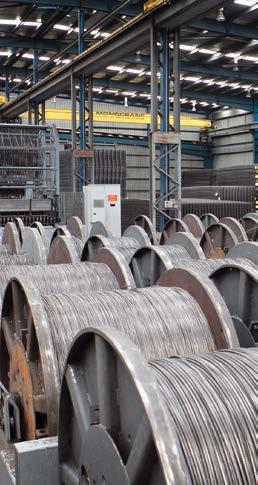
Most steel products are required to display unique markings which identify the point of manufacture, these include reinforcing steels and mesh. Through these bar markings and the associated documentation from the manufacturer, the product can be traced back to the point of manufacturer and knowledge of any associated transforming works (e.g. cold working such as straightening or bending).
With reinforcing and structural steel products supplied from multiple sources, there are often questions regarding compliance with the material standards, the origins of products and/or traceability through the supply chain.
In steel, while traceability exists in the ACRS scheme, it was previously achieved through analogue systems, processor records and hard copy tags. This made visual verification and cross-referencing time consuming, was still open to fraudulent certification, and was not always consistently applied. Traceability needs to be maintained from manufacturers through processors to the end site.
Until now demonstrating the provenance of material on site has relied on collecting delivery notes to cross check against computer databases to confirm compliance with quality and sustainability standards. So ACRS introduced a better way – the ACRS Cloud app.


Created by and for the industry, ACRS provides rigorous, trusted, independent, expert, third-party certification of reinforcing and structural steels for:
• Product Certification
• Traceability Certification
• Sustainability Certification
Last year, ACRS introduced ACRS Cloud, the first digital certification system of its kind for steel in the region. It moves ACRS full certification and traceability from source to site to a digital system.
ACRS Cloud gives steel buyers and users instant assurance over product certificates at the touch of a button - in a secure environment - to provide confidence of products’ conformance to AS/NZS Standards.
Users through the supply chain can get product piece of mind by checking the nature and authenticity of ACRS steel certificates in the new ACRS Cloud app - available free on Apple and Android.
The app will put assurance in users’ hands wherever and whenever they need it, including: bar and tag markings; where the product has come from; and its validity and its assurance credentials in the form of ACRS’ sector-leading independent certification. Just like online, you will be able to search for certificate holders by mill name or country, and report any concerns, all in the app.
The ACRS Cloud app further protects the market from product compliance issues: not just in poor product identification or deliberate misrepresentation, but by making it easier for users to check steel’s provenance at every stage.

Under the ACRS Cloud system, batch-specific tags with QR codes are put onto steel at steel producers, fabricators, and processors. In order to make product traceability more secure and accessible, ACRS certificates will carry QR codes which – when scanned at each point – will open validation and vital product information in ACRS Cloud, instantly identifying the provenance of the product and its certification details against a single source of truth.
To make use of ACRS certification, ACRS-certified steel must be specified and ordered – once steel is on site, it’s too late. Then, all builders have to do to confirm that the steel that’s delivered has been certified, is simply:
1. Download the app for free at steelcertification.com/cloud or in your app store
2. Scan the QR code on delivery papers or electronic certificate
3. In the app, select the ACRS ID of the certificate
4. View the certificate in full, including scope, origin, and key dates
For certainty over the steel you use, make sure you are specifying ACRS-certified steel, and checking conformance easily in the new ACRS Cloud app. Available on Apple and Android, the app is completely free to download and use.
The ACRS Cloud app further protects the market from product compliance issues: not just in poor product identification or deliberate misrepresentation, but by making it easier for users to check steel’s provenance at every stage. It also supports best practices for those seeking sustainable steel.
1: DOWNLOAD THE APP2: SCAN QR CODE on delivery paper / electronic certificates

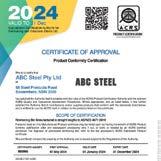
As well as being a signatory and example for the Australian National Traceability Pledge, ACRS also provided views on the UNECE digital product conformity certificate exchange review.
In line with these international efforts, ACRS Cloud provides an excellent example of how national systems can align with global innovations like those proposed in the review.
3: SELECT ACRS ID of certificate in app

1: VIEW CERTIFICATE
inc. scope, origin, key dates
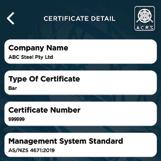
The ACRS Cloud app further protects the market from product compliance issues: not just in poor product identification or deliberate misrepresentation, but by making it easier for users to check steel’s provenance at every stage. It also supports best practices for those seeking sustainable steel.
ACRS Cloud aims to centralise and digitise certification data, improving accessibility and verification processes. This system mirrors the objectives of UNECE by emphasising automated and interoperable data exchanges, enhancing the reliability and transparency of conformity assessments across the supply chain.
By adopting similar principles to those outlined in the review, ACRS Cloud not only advances Australia's digital trade capabilities but also aligns seamlessly with global standards proposed by the UNECE.
Find out more at: https://steelcertification.com/cloud


Up to 600 km on one single charge. That’s how far Volvo’s next-generation heavy-duty electric truck will be able to drive. The longer range represents a breakthrough for long-distance transport with zero tailpipe emissions.
The electrification of heavy trucks is continuing across the world and longer distances are now becoming a possibility.
Next year Volvo will launch a new long-range version of its FH Electric that will be able to reach up to 600 km on one charge. This will allow transport companies to operate electric trucks on interregional and long-distance routes and to drive a full working day without having to recharge. The new Volvo FH Electric will be released for sale during the second half of 2025.
“Our new electric flagship will be a great complement to our wide range of electric trucks and enable zero-exhaust emission transport also for the longer distances. It will be a great solution for transport companies with a high annual mileage on their trucks and with a strong commitment to reduce CO2,” says Roger Alm, President Volvo Trucks.
The enabler for the 600 km range is Volvo’s new driveline technology, the so-called e-axle, which creates space for significantly
more battery capacity onboard. More efficient batteries, a further improved battery management system and overall efficiency of the powertrain also contribute to the extended range.
Volvo Trucks is a global leader in mediumand heavy-duty electric trucks with eight battery-electric models in their portfolio. The wide product range makes it possible to electrify city and regional distribution, construction, waste management and soon, long distance transport. Volvo has so far delivered more than 3,800 electric trucks to customers in 46 countries around the world.
“The transport sector represents seven percent of global carbon emissions. Batteryelectric trucks are important tools to reduce the climate footprint. Besides the important environmental gains that electric trucks bring, they offer truck drivers a much better working environment, with much lower levels of noise and vibrations,” says Roger Alm.
Volvo Trucks drives the transition towards fossil-free transport to reach its net-zero emissions target by 2040 using a three-path technology strategy. The three-path technology approach is built on battery electric, fuel cell electric and combustion engines that run on renewable fuels like green hydrogen, biogas or HVO (Hydrogenated Vegetable Oil).
Australia is on track to hit an annual milestone of 100,000 electric vehicle (EV) sales this year despite tough economic conditions, according to the Electric Vehicle Council.
The Australian Automobile Association’s EV Index shows there were more than 30,000 battery electric (BEV) and plug-in hybrid vehicle (PHEV) sales in the second quarter of this year – the first time Australia has cracked that figure in a single quarter.
The Index shows that BEV/PHEV sales represented 9.6 percent of new light vehicles sold in Q2.
Electric Vehicle Council chief executive Samantha Johnson said that the increasing sales were encouraging and acknowledged the long road ahead.
“Australia has never had so many electric vehicles on the roads. It was a record breaking quarter for combined battery and plug-in electric vehicle sales,” said Ms Johnson.
“The continuing strength of electric vehicle sales means Australia remains on track to hit the 100,000 EV annual sales target in 2024.
“These sales figures are without precedent, which is extremely encouraging given the broader economic pressures with high interest rates and the cost of living limiting people’s ability to purchase new cars.
“These figures demonstrate that Australians want more electric cars and governments need to listen to this demand by continuing to provide support for electric vehicles.
“We have seen several states prematurely withdraw incentives – it is critical that governments implement targeted programs that enable more Australian households and businesses to make the switch to electric vehicles.
“Misinformation is also hampering the electric vehicle transition. The facts are that EVs are cheaper to own and run than ICEs, they reduce air pollution and they’re essential to reducing our carbon emissions.
“We need to see the EV market grow to meet our climate targets – the National Vehicle Efficiency Standard will play a vital role but there is much more that needs to be done to reduce the nation’s transport emissions.”

Hong Kong-based EV Dynamics (EVD) and MCB Ventures recently announced the launch of their new fully-owned subsidiary, EVD.MCB, focused on revolutionizing eco-capital operations across Asia and Africa. This powerful collaboration unites the expertise and innovation of both companies to drive the rapid adoption of commercial electric vehicles (EVs) and advanced power generation and storage solutions in hyper-growth regions, paving the way for a more equitable and sustainable future.
Established in 1996, EV Dynamics is at the forefront of cutting-edge technologies, specialising in electric vehicles, battery technology, and mining. Known for its advanced lithium-ion polymer solid battery technology, EVD is already making waves with its electric bus project in partnership with the Hong Kong Productivity Council.
With strategic alliances across Europe and the Americas, EVD is set to lead the charge in global EV markets, ensuring its products meet the
highest international standards.
MCB Ventures is a venture capital platform that seamlessly integrates traditional finance (TradeFi) with decentralized finance (DeFi) within the blockchain ecosystem. Focused on sectors such as regenerative energy, biofuel production, and next-gen AI, MCB Ventures is committed to driving impactful projects through governmentbacked initiatives and solid business models. Their distinctive approach of combining Governmentto-Government (G2G) projects through publicprivate partnerships (PPP) with Real World Assets (RWA) and Decentralized Physical Infrastructure Networks (DePIN) positions them as pioneers in integrating physical and digital innovation.
The formation of EVD.MCB is a strategic move to harness the immense growth potential in Asia and Africa. By capitalizing on local opportunities and fostering strong government partnerships, the new subsidiary aims to:
• Expand Operations: Target high-growth regions with tailored low-carbon solutions,
including but not limited to cuttingedge renewable energy initiatives and transformative biofuel projects, driving robust economic growth and environmental resilience.
• Lead in Green Innovation: Establish EVD. MCB as a leader in the commercial EV and power sectors, setting new benchmarks for responsibility.
• Enhance Corporate Value: The successful rollout of regenerative initiatives is expected to significantly boost the valuation of both parent companies, reflecting their commitment to an Environmental, Social, and Governance future.

EVD.MCB will leverage the strengths of both companies to deliver innovative solutions that meet the unique challenges of the regions they serve. Together, they are poised to make a lasting impact on the future of sustainable development in high-potential markets.







Hamm’s new vibration crusher drum (VC) makes it possible to crush and compact rocks and stone in a single work step. This technology brings with it major benefits for construction companies, including significant time, cost and CO2 emission savings.
Processes on the construction site can be streamlined by deploying VC compactors, since these reduce the work and expense needed for material preparation and transport. For customers, this in turn means time, costs and
The VC compactors from Hamm are compatible with attachments including round-shank cutting tools for stone and heavy-duty cutting tools. Thanks to the simple design, no specialist tools are required to change attachments.
CO₂ emissions are cut by up to 50% – depending on the application.
The HC 250 C VC compactor is able to crush and compact mixed soils in addition to stones such as basalt and granite in a single work step. Featuring a 150 kW Deutz engine and reinforced components, the new compactors are wellequipped for particularly tough applications. The addition of the “C” in the type designation also symbolises a reinforced drum drive, capable of inclines of up to 60%.

The machines are supplied as standard with heavy-duty tyres for rocky terrain, driver's cab and the Easy Drive operating concept. An air-sprung driver's seat can be selected as an optional extra.
Of particular note is the newly designed tool holder system, which is compatible with roundshank cutting tools for soft stone, as well as heavy-duty cutting tools with carbide tips and hard facing for abrasive stone or hard stone. This ensures assembly and removal are quick and easy with no need for specialist tools, which in turn keeps maintenance and servicing costs down.
Existing machines can be fitted with the newdesign tool holder system by changing the drum. Existing machines, such as the H 25i VC or 3625 VC can also be fitted with the new system by changing the drum.
The new VC compactors are suitable for a wide range of applications, including crushing and compacting geological material or working with rubble in landfill sites. They can also be used in road construction works, tunnel building and surface mining sectors, or to pre-crush and loosen stone. This takes a lot of hard work out of subsequent processes, such as layer-by-layer milling off.
Visit: https://www.wirtgen-group.com/ en-au/company/hamm

Protecting road work crews from errant vehicles is just as important on suburban streets as it is on major highways and arterial roads.


Ideal for use on suburban streets and roads with posted speed limits of up to 70 km/h, Scorpion II® METRO TMA delivers the ideal combination of life-saving MASH TL2-certified impact protection in a compact, easy-to-manoeuvre size.

ASSESSED, APPROVED & RECOMMENDED FOR ACCEPTANCE throughout Australia by ASBAP (Austroads Safety Barrier Assessment Panel), the Scorpion II® METRO TMA is not only THE FIRST TL2 TMA to be fully tested and approved to the latest MASH Standards, it is currently THE ONLY TL2 Truck Mounted Attenuator to be successfully TESTED, PASSED & ELIGIBLE to the current MASH Standards.

Author: Shihao Fu, Technology Analyst at IDTechEx
The autonomous truck industry is experiencing a significant revival, with vehicle delivery numbers continuously breaking records. Companies across Asia, Europe, and the United States are eagerly advancing into the commercialization testing phase. Autonomous trucks are addressing critical real-world issues by reducing transportation costs and optimizing Total Cost of Ownership (TCO) through meticulous, practical calculations.
In the report, “Autonomous Trucks 2024-2044: Technologies, Trends, Forecasts”, IDTechEx conducts a comprehensive TCO analysis across different levels of autonomy and powertrain types, focusing on the cost structures in the United States and China. This analysis considers the disparities in procurement costs, maintenance, and operational expenses between the two markets.
IDTechEx’s analysis applies these cost factors to a 10-year operational model, utilizing exclusive data obtained from their research targets. Compared to other TCO analyses in the industry, IDTechEx have refined the evaluation of maintenance and operational costs in various markets, considering factors such as depreciation, highway tolls, management fees, and insurance.
Through a detailed TCO analysis of different types of autonomous trucks in both China and the US, IDTechEx identified several critical factors driving cost differences, including purchase prices, maintenance expenses, fuel costs, and unique market conditions.
• Purchase costs: For mid-to-high-end Level 0 (non-autonomous) trucks, the purchase cost in China is approximately US$70,000, compared to US$114,286 in the US, representing a 63% difference. This disparity stems from significant differences in manufacturing costs, market scale, and labour expenses between the two countries. China's robust manufacturing infrastructure and large-scale production capabilities enable lower truck production costs. Additionally, the large demand for trucks in China further reduces the cost per vehicle through economies of scale.
• Advanced autonomous vehicles: For Level 2/Level 3 autonomous trucks, the reference purchase cost in China is US$112,000, while in the US, it is US$214,286—about 91% higher. The cost of developing and integrating autonomous systems is relatively higher in
the US, coupled with stringent regulations that demand higher technical maturity and safety standards, driving up the cost of these advanced models. The cost gap is even more pronounced when analysing Level 4 autonomous electric trucks, with reference purchase costs of US$250,000 in China versus US$450,000 in the US.
• Electric platform considerations: The upfront cost of electric trucks at Level 4 Autonomy, is largely determined by the required battery pack size. Lithium-ion battery packs are priced between US$160 and US$200 per kWh, with a typical 150 kWh battery for a medium-duty truck costing over US$25,000, while a heavyduty truck with a 400 kWh battery could see costs exceeding US$65,000. In recent years, China’s booming electric vehicle market has significantly optimized battery material costs and supply chains. Coupled with government subsidies and economies of scale, China’s advantage in electric vehicle production is difficult to challenge purely through market forces. The Chinese government’s robust support for electric vehicles, including the construction of charging infrastructure and purchase subsidies, has substantially reduced the cost of acquiring electric trucks. Conversely, in the US, while the electric vehicle market is growing rapidly, there is relatively less infrastructure and policy support, leading to higher purchase and operating costs. IDTechEx believes this cost differential will be evident in the early stages of market adoption for autonomous electric trucks, as seen in China’s consumer electric vehicle market.
Fuel costs are another crucial factor influencing TCO. For Level 0 trucks, fuel costs in China are calculated at US$371,429, compared to US$336,576 in the US. This difference primarily reflects the variation in fuel prices between the two countries.
While fuel prices are lower in China, higher fuel taxes—often accounting for up to 48%—result in relatively higher actual usage costs. In contrast, fuel prices in the US are more volatile but are accompanied by standardized fuel taxes, resulting in overall lower fuel costs.
For Level 4 electric trucks, the energy cost difference is even more pronounced, with energy costs in China at US$141,780 versus US$177,480 in the US. This disparity not only reflects significant differences in electricity prices but also relates to the prevalence of charging infrastructure, charging speed, and the cost structure of power generation.
Compared to traditional internal combustion engines, electric trucks will increasingly demonstrate cost advantages in long-term operations. Firstly, energy costs for electric trucks are relatively stable, and as global efforts to promote green energy continue, future electricity costs could decrease further. IDTechEx’s battery price forecasts suggest that by 2030, the average price for batteries and battery packs will reach approximately US$100 per kilowatt-hour. Reducing the cost of truck battery packs will be key to the widespread deployment of battery electric vehicle (BEV) trucks.
Moreover, electric trucks have lower maintenance costs than traditional trucks due to the high reliability of electric motors and battery systems, with fewer components requiring regular maintenance. However, the TCO advantage of electric trucks extends beyond direct costs. Electric trucks can reduce carbon emissions, which could lead to additional policy incentives or carbon tax reductions, further lowering their total cost of ownership. As battery technology continues to advance, improvements in battery life and energy density, along with shorter charging times, will enhance the economic viability and market competitiveness of electric trucks.
Given China's leading position in the electric vehicle market and strong government support, the country is likely to maintain lower acquisition costs for electric trucks in the short to mid-term, further promoting their adoption in the Chinese market.
The IDTechEx report, “Autonomous Trucks 2024-2044: Technologies, Trends, Forecasts”, provides a comparative analysis of TCO in China and the US across different levels of autonomy and powertrain types. It also delves into the market factors driving these cost differences. IDTechEx’s analysis offers valuable insights for industry participants, helping them make more informed decisions in the global market.
To learn more about this new IDTechEx report, including downloadable sample pages, please visit: www.IDTechEx.com/AutoTrucks


Did you know you can access the latest issue of Highway Engineering Australia via Informit?
The Informit Engineering Collection is an ever expanding resource covering aspects of highway engineering - planning and development, design, construction, maintenance and management. The database offers an extensive variety of resources including journals, trade publications, reports and conference proceedings.
The Collection guarantees quality through partnerships with peak professional bodies including Engineers Australia and the Institution of Professional Engineers New Zealand, as well as Content Providers including EPC Media Group.
The Informit Engineering Collection delivers hard to find content designed to complete and complement your highway engineering requirements.
Other key titles published by EPC Media include:
Construction Engineering Australia Waste + Water Management Australia
Request a quote or free trial via www.informit.org/trial-and-quote
Research for your global future



So too, the Engineer can use the vast capacity of Finite Element analysis to validate, optimize and adapt data to create the finest design solutions.
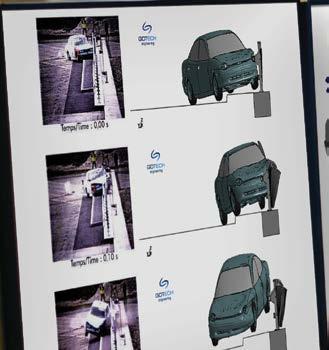






More than 700 delegates convened over three days at the International Convention Centre Sydney for the annual ITS Australia Summit 2024, the nation’s largest industry led transport technology event. Over 200 speakers across 40 sessions delivered presentations and participated in lively panel discussions that examined the core themes of safety, sustainability, and inclusivity to deliver a better transport future and support vibrant communities.
ITS Australia President, Silje Troseth, reflected on the importance of the annual Summit, which allows the broad industry to come together and showcase technology-led solutions to the country's major transport challenges.
“Once again, Summit provided a forum for leaders across our broad industry to gather, bringing fresh ideas and showcasing the latest research, programs, and technology that can contribute to solving longstanding and emerging transportation challenges,” Ms Troseth said.
“In terms of road safety, for example, we know that in recent years, our national road toll has been moving in the wrong direction. At this year’s Summit, we saw a range of solutions, such as the latest development in C-ITS, that will make vehicles on our roads far safer.”
“Another impressive focus this year was inclusivity, with presentations demonstrating an intelligent transport future designed for everyone in our community, regardless of their specific
needs. As a sector we are working hard to reduce transport disadvantage in both urban and rural Australia through the application of the latest technology,” Ms Troseth added.
As the host state partner for Summit 2024, the New South Wales Government, through Transport for NSW, was front and centre, highlighting the technology operating on the State’s roads through a series of presentations across the program. Beyond the Summit program, delegates witnessed the most advanced technology solutions in operation and development in Sydney, which are soon to be deployed on the State’s roads.
One such example was a Technical Tour to the Australian Centre for Advanced Robotics, where delegates were able to witness and experience a live demonstration of a Connected and Automated Test Vehicle fitted with the latest C-ITS capabilities.
A significant participant in the CAV demonstration was the NSW Roads Minister, John Graham, who later visited Summit 2024, meeting with many organisations demonstrating their tech solutions, before addressing delegates about his Government’s commitment to ITS.
“Given how much is changing in intelligent transport, it’s so important to bring the best experts and innovators together to share ideas and build relationships for future collaborations,” said Minister Graham in his address to delegates,” Minister Graham said.
“The role of innovation in our roads network is just as important as opening a motorway or making the tolling system fairer, and in fact, technological innovation can help governments in a number of ways, including tolling and motorway management.”
“The next chapter of investment under this government is about how we use roads and other intelligent transport systems to connect our communities – that means connecting people to job opportunities, to their friends and families by building not just the roads, but the connected road networks of the future,” the Minister added.
Another key milestone at Summit 2024 was the hosting of the inaugural Careers Expo, where students from three leading NSW universities - the University of Sydney, UTS, and UNSW Sydney - joined delegates on the final day of the event to learn more about Australia’s burgeoning ITS industry and better understand the diverse career pathways it presents.
“The response from students was tremendous, with more than 150 students registering for the Careers Expo, which far exceeded our initial expectations and demonstrated a great interest in careers in ITS,” said ITS Australia Chief Executive Susan Harris.
“Importantly, the Careers Expo was supported by some of the transport industry's biggest employers, with state government transport agencies from NSW, Queensland, and WA, as well as Transurban – one of the world’s leading toll-road operators – highlighting ITS careers to students in Sydney.,” Ms Harris said.
“We look forward to further enhancing our Careers Expo in the future as part of our ambitions to build a resilient ITS workforce in Australia by supporting our industry in hiring the best and brightest students across various disciplines such as engineering, computer science, and transport planning.”
The success of the ITS Australia Summit is underpinned by tremendous support from a committed ITS industry, and the 2024 event was no exception. Around 40 organisations, big and small, supported the event as sponsors and exhibitors.”
Ms Harris reflected on the industry’s ongoing support for the flagship annual event.
“Each year, it is inspiring to see the lineup of organisations supporting the ITS Australia Summit – many who return each year, alongside new participants eager to be part of our thriving ecosystem.”
“Their participation not only provides them the opportunity to showcase their technology to an engaged sector, but it also underpins our ability to produce a diverse program and innovative networking activities that are often the setting for developing new industry partnerships,” Susan Harris concluded.
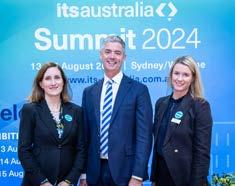


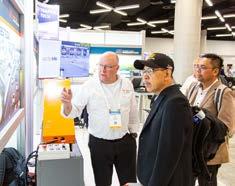








ITS Australia is proud to release our Strategic Plan 2024 – 2029, guiding the association’s activities for the next five years.
The new Plan, which was developed by our engaged board directors and senior staff, considered the feedback from a members’ survey in early 2024 and involved a big picture look at our industry and the external factors likely to be of influence in the years ahead.
The Plan is underpinned by our vision that ‘transport is safe, sustainable, productive and accessible through the application of technology’ with those key messages carrying through to our defining purpose that advocates for the use of technology to underpin a transport future that is:
• Seamlessly connected for all
• Efficient
• Harmonised
• Powered by a thriving industry
• Embraced by society.
The strategic priorities are evident in our dayto-day work, such as our expanded policy and research agenda, a third intake of our mentoring
program, and participation at next month’s ITS World Congress.
Six key areas of focus will underpin our overarching delivery of the new strategic agenda:
• Uniting Industry – we will foster collaboration by bringing our broad industry together through events and other activities for meaningful engagement.
• Highlighting Career Pathways – we will enhance the reputation of our industry as an enticing career pathway and cultivate a robust talent pipeline.
• Celebrating Excellence – we encourage adopting and deploying emerging transport technology by recognising industry achievement, showcasing successful ITS deployments, and highlighting best practices.
• Supporting Collaborative Research – we will reinforce our trusted position by leading a research program that connects key stakeholders and delivers an evidence base that supports our advocacy work.
• Providing a Trusted Voice – we leverage our respected position and our members’

insights to advocate for emerging transport technology.
• Fostering International Collaboration – we collaborate with our international peers to drive policy development and technology deployment by participating in international events and connecting our industry with global leaders.
You can view or download a copy of the Strategic Plan 2024 – 2029 at: https://its-australia.com.au/strategicplan-2024-2029
The ground-breaking Annotation project by Kapsch TrafficCom AG, has been nominated for the prestigious Zero Project Award 2025. Launched in 2008 by the Essl Foundation, the Zero Project initative supports the rights of people with disabilities worldwide. The nomination recognizes the company for its work to implement the United Nations Sustainable Development Goals (SDGs) and the UN Convention on the Rights of Persons with Disabilities (UN CRPD).
Kapsch TrafficCom's Annotation project was selected from a pool of more than 500 projects from 90 countries.
The Annotation project offers young adults at risk of exclusion the opportunity to enter professional life in the field of data annotation and validation, which is crucial for the development of AI. As part of this initiative, Kapsch TrafficCom has successfully established annotation teams in Europe and South America. In addition, a separate association called Responsible Annotation was founded with the aim of further supporting young people with disabilities and also bringing this

project closer to other companies.
The Award nomination was reviewed and confirmed by an international panel of experts in the inclusion of persons with disabilities. After the announcement of the nominations for the Zero Project Award, hundreds of professionals will vote on the nominated projects to determine the recipients of the 2025 Zero Project Award. The final winners will be announced on December 3, 2024, the International Day of Persons with Disabilities.
Kapsch TrafficCom is a globally recognized provider of transport solutions for sustainable mobility, with project successes in more than 50 countries. Innovative solutions in the application areas of tolling, toll services, traffic management and demand management contribute to a healthier world without congestion. With one-stop-shop solutions, the company covers the entire value chain of its customers, from components and design to the implementation and operation of systems.
Headquartered in Vienna, Kapsch TrafficCom has subsidiaries and branches in more than 25 countries and is listed in the Prime Market segment of the Vienna Stock Exchange. In the 2023/24 financial year, the company had some 4,000 employees generated sales of EUR 539 million.

Cohda Wireless’s world-leading vehicle technology solution, the MK6, has been certified by the OmniAir Consortium®, the US’s leading industry association promoting interoperability and certification for Intelligent Transportation Systems, tolling, and connected vehicles. The MK6 is the first C-V2X Road-Side unit (RSU) to be certified for deployment within the United States by OmniAir and follows certification by FCC (United States), CE (Europe), UKCA (United Kingdom), ISED (Canada), and KC (South Korea).
The MK6 RSU was found to conform to OmniAir’s LTE-V2X (RSU) Release 1 Conformance test specifications. These industry-developed test cases are based on state-of-the-art technology standards for connected vehicles and transportation environments. OmniAir Certified® devices are tested for conformance to industry standards, as well as interoperability, performance, and security requirements.
“Congratulations to Cohda Wireless for being the first to achieve OmniAir Certification for a C-V2X RSU under the FCC Waiver,” said Jason Conley, Executive Director of OmniAir Consortium.
“OmniAir is committed to supporting the deployment of trusted, interoperable, and certified V2X technologies to improve road safety in the United States and throughout the world. This milestone will allow for the deployment of C-V2X technologies within the 5.895-5.925 GHz band to support intelligent transportation systems (ITS) operations.”
Cohda CEO Dr. Paul Gray said that OmniAir certification paves the way for the MK6’s widespread deployment across the United States.
“This is another very welcomed and significant validation of our connected vehicle technology that cements the MK6 as the solution of choice in the rapidly growing US market,” explained Dr. Gray.
In January this year, Cohda’s MK6 was certified by the Federal Communications Commission (FCC) which recently granted waivers permitting deployment of cellular-vehicle-to-everything (CV2X) technology in the upper 30 MHz of spectrum in the 5.895-5.925 GHz band. As a participant in the FCC Joint Waiver program, Cohda was the first to receive the green light for C-V2X (B47) from the FCC for its Original Equipment Products MK6 RSU connectivity device.
Cohda launched the MK6 in late 2022 as the world’s most advanced and versatile V2X connectivity solution. The MK6 RSU (RoadSide Unit) and OBU (On-Board Unit) offer the most comprehensive connectivity capability as standard features, including DSRC, C-V2X, LTE/5G and Wi-Fi/Bluetooth. Cohda’s V2X stack and applications are already the most widely deployed in the industry, but the MK6 is its most capable, most versatile, and most powerful platform to date.
The MK6 features NXP® Semiconductors’ RoadLink® SAF5400 and SXF1800 chipsets as well as the Qualcomm Snapdragon® Auto 5G ModemRF Platform.
A new advanced warning system on Melbourne’s CityLink has reduced crashes at a notorious hotspot by almost 20%.
When traffic queues to exit a road, the likelihood of rear-end and side swipe collisions can increase, and we monitor our exits to identify queuing and other potential hazards. Smart technology embedded in the road surface detected a hotspot at CityLink’s Power Street exit, where long queues were associated with more than 200 incidents between 2018 and 2023.
In response to this data, and to improve safety for motorists, we installed a new advanced warning system at the exit ramp. The system, which has been operating since January 2024, detects when vehicles are queuing and triggers overhead signage warning motorists to brake early to avoid causing a crash.
The system’s detectors automatically measure traffic speed, volume and density, and use this data to activate the warning signage, giving motorists earlier notice to slow down prior to joining the queue.
The system also shares its data with the Power Street exit traffic lights, allowing extra ‘green light time’ to help clear the queue when adjacent roads are clear.
The automatic system operates 24/7 and has been found to detect queuing with 99.7% accuracy.
Since implementation, Transurban has seen a 17.8% reduction in rear-end collisions caused by queuing at the hotspot. Motorists are also experiencing quicker travel times with the median speed on the exit ramp increasing by almost 5% in the morning peak.
A trip on the West Gate Freeway from Normanby Road to City Road via the Power Street exit ramp is now faster, with travel times decreasing by 4.5% due to fewer incidents and quicker clearance times.
Transurban is now exploring other locations to roll out this congestion management system to reduce accidents and ultimately make Melbourne’s roads safer for everyone.
Visit: https://www.transurban.com


Ballarat in Victoria is probably most well-known for ‘Sovereign Hill’, one of the state’s premier tourist attractions that vividly brings the 1850’s gold rush era to life.
Covering 15 hectares on a former gold mining site and run by the Sovereign Hill Museum Association, the outdoor living museum comes complete with a living township, featuring diggings, underground mines, costumed characters and coach rides, as well as shops, trades, schools, and dwelling. Offering a series of experiences, it’s an immersive experience into Australia's historical past.
Tasked with enhancing the Museum's infrastructure, the Association embarked on a project aimed at improving durability using precast concrete, all while preserving the site’s historical appearance and ensuring accessibility for all visitors.
UPGRADES TO IMPROVE DURABILITY AND ACCESS FOR ALL
In keeping with the era’s aesthetics, the museum had typically used timber for its retaining walls. While timber was originally chosen for its availability and workability, it necessitated frequent maintenance and replacement over time. As well, existing infrastructure did not provide access to the gold panning experience for visitors with mobility impairments.
The scope of works to overcome the challenges included devising a more durable solution for the museum’s retaining walls and constructing a new accessible platform.
The solutions: a concealed, sustainable and robust precast concrete retaining wall system,
Project: Sovereign Hill Museum Association
Precaster: Sunset Sleepers
Project Location: Ballarat, VIC
covered with timber to preserve the museum's authentic gold rush era appearance, plus the construction of a new platform. Requiring construction of additional retaining walls, the platform would facilitate wheelchair access to a new all-ability gold panning area.
National Precast member Sunset Sleepers was entrusted with manufacturing the much needed sleepers for the project.
Known for their reliability and expertise, Sunset Sleepers’ commitment to quality, sustainability and innovation positions them as a leader in the concrete sleeper market, providing clever solutions for a wide range of construction projects.
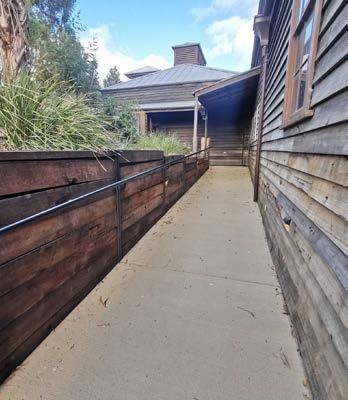
According to Sunset Sleepers Director Miguel Donnenfeld, 800 customdesigned reinforced concrete sleepers were custom-manufactured, tailored to specific engineering requirements. R6 rebar was specified in the project drawings, to enhance durability and prevent shear failure. By distributing stresses more evenly throughout the sleepers, the reinforcement would also control shrinkage and potential cracking during construction.
National Precast CEO Sarah Bachmann says that replacing outdated timber retaining walls with modern, durable materials that are concealed to preserve historical authenticity, is an ingenious solution for one of Victoria’s renowned tourist attractions.
“With fond memories of having visited the museum as a child, it’s pleasing to see one of our members making a contribution to such a worthwhile project,” Bachmann comments.
“Through meticulous planning and execution, Sunset Sleepers have effectively enhanced this iconic museum, ensuring its infrastructure meets contemporary standards and accessibility requirements, while preserving its historical charm,” she adds.
Despite being a busy tourist attraction with on average 2,500 visitors each day, the integration of the museum’s new infrastructure was seamlessly managed, to minimise disruption. Sunset Sleepers coordinated its manufacturing and installation to align precisely with the museum's operational needs, ensuring a smooth process from start to finish.
Sovereign Hill Museum, situated in Ballarat, Victoria, is a prominent living museum that adds $260 million annually to the local economy.
Attracting hundreds of thousands of visitors annually, it serves as a cornerstone of tourism, generating employment opportunities and bolstering local businesses.
The museum's funding primarily originates from the Australian Federal Government’s National Tourism Icons Program, philanthropic contributions and investments from the private sector.
Managed by the Sovereign Hill Museum Association, a non-profit organisation, its mission is to conserve and showcase the history of the Australian gold rushes, providing visitors with a culturally enriching and educational experience.


Melbourne’s first dedicated busway is a step closer with the release of designs for an upgraded Doncaster Park and Ride, as part of the transformation of one of the city’s busiest bus interchanges into a modern transport hub. The designs for the Park and Ride went on exhibition for public comment on September 4.
In a win for commuters and locals, the Doncaster Park and Ride upgrade will have a dedicated entry and exit ramp connecting to Victoria's first dedicated busway along the Eastern Freeway – making it easier for people to use faster, more frequent and more reliable public transport to get to and from the city. Three longer dedicated bus platform bays will service existing and future bus services to further reduce congestion and allow buses to enter and exit the Park and Ride more efficiently.
A new 435-space multi-level car park –including upgraded drop-off and pick-up bays, lifts, stairs, 10 motorcycle spaces and 13 accessible car spaces – will also make it easier for people in surrounding areas to catch the bus.
New pedestrian and cycling paths will link into the new underpass under Doncaster Road, complementing a new 530 square metre public forecourt. The Park and Ride will also feature more than 1,000 square metres of green wall space for climbing plants, more than 150 new indigenous and native trees and over 20,000 plants.
Other upgrades include a public announcement system, additional bicycle parking with 28 new hoop bike racks and a Parkiteer cage for 26 bicycles, a new passenger services building and real-time parking availability signs so people can see how many spaces are free as they enter.
The upgraded park and ride will directly connect to the future Eastern Busway from Doncaster towards the city. Dedicated high-
speed bus lanes will make it quicker and easier to get to and from the city for the 6 million bus trips taken every year on the Eastern Freewayslashing bus travel times along the freeway by up to 30 per cent.
The upgraded park and ride at Doncaster, together with the new park and ride at Bulleen which opened in 2023 - four years ahead of schedule - will double the number of car parking spaces for people using express bus services along the upgraded Eastern Freeway to a combined total of over 800 spaces. This early completion of the Bulleen facility will allow
east to continue to enjoying the benefits of a Park and Ride locally when construction kicks off on Doncaster Park and Ride.
North East Link, upgrades to the Eastern Freeway and M80 Ring Road will fix the missing link in Melbourne’s freeway network, take 15,000 trucks off local roads and slash travel times by up to 35 minutes. The project is jointly funded by the Australian and Victorian governments.
Construction of the new Doncaster Park and Ride is on track to begin next year and is planned for completion by 2028. Designs are now open for community input at: https://engage.vic.gov.


Hydro-structural resin for durable joint and surface sealing
It is often not possible to expose damp areas in structural components.
Injection with MC-Injekt GL-95 TX into cavities or at the interface with the adjoining soil offers you a reliable alternative.
The hydro-structural polymer-modified resin creates a durable yet soft-elastic seal.
-Sealing of joints, cracks, cavities in damp masonry and concrete exposed to permanent water contact
-Sealing and bonding injection for securing HDPE membrane waterproofing systems
-Remedial exterior sealing of ground-connected structural components through wide-area curtain injection
-Remedial provision of horizontal and vertical dampproof barriers in masonry
Low Viscosity
Because of its low viscosity, MC-Injekt GL-95 TX can be readily injected both into cavities and into narrow spaces to provide durable, reliable waterproofing.
Excellent Swelling Behaviour
The combination of non-water-soluble polymers and hydrophilic groups that can absorb and store water makes this hydro-structural resin the ideal solution for sealing joints and surface areas against water penetration.
Load-cushioning Elasticity
Thanks to its unique integrated “polymer reinforcement”, MC-Injekt GL-95 TX remains intact and resilient even to the most extreme deformation cycles. The exceptional combination of microstructures combined with outstanding adhesion on concrete and many other construction materials – both rough and smooth – make this injection product particularly resistant to mechanical stress.
The low viscosity of MC-Injekt GL-95 TX ensures maximum gap-filling efficiency for a dependable injection outcome. The integrated polymer reinforcement counteracts dilution of the activated hydro-structural resin, thus eliminating a common problem encountered with conventional hydrogels.
Both during the injection process and post reaction, MC-Injekt GL-95 TX remains environmentally compatible and is highly suited to applications involving wide area contact with both ground and potable water.
The performance characteristics of this hydro-structural resin correspond as a minimum to the following classification per EN 1504-5: U (D1) W (1) (2/3/4) (1/40).


Whatever your line marking or tra c management requirements, A1 Roadlines has the equipment and expertise to meet your needs.

